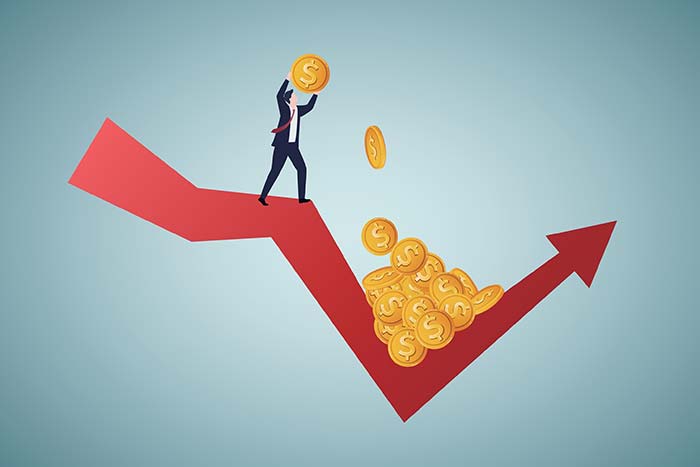Over the past several years, I’ve told readers repeatedly that market timing – jumping from stocks to cash and then back into stocks – doesn’t work.
Sure, anyone can make a good call occasionally.
But no one gets it right consistently.
That means it’s just a matter of time before market timers end up on the sidelines while the market puts on a furious rally.
The past few months have been a perfect case in point.
Every time President Trump threatened or imposed tariffs, the market would sell off.
And every time he delayed, reduced or negotiated them away, the market would rally.
Just look at the tariff timeline since this year’s inauguration…
On February 1, the Trump administration announced tariffs on Mexico, Canada, and China to take effect on February 4.
On February 3, Trump reversed course and delayed tariffs on Mexico and Canada but allowed 10% duties on China to go into effect.
On February 13, the administration unveiled a plan for “reciprocal tariffs” on an array of countries and goods to take effect around April 2.
On February 26, Trump claimed the European Union was formed to “screw the United States” and again threatened the bloc with 25% tariffs.
On March 4, the administration imposed 25% tariffs on imports from Canada and Mexico and an additional 10% tariff on imports from China.
On March 6, Trump reversed course and excluded an array of goods from Mexico and Canada from the new tariffs. But tariffs on China stayed on.
On April 2, Trump announced “Liberation Day” tariffs of 10% worldwide and additional duties on the “worst offenders.”
On April 11, the administration announced reciprocal tariffs will exclude consumer electronics from most countries but retained a 20% tariff on electronics from China.
On April 23, a dozen U.S. states filed a lawsuit to stop President Trump’s tariffs, arguing they are unlawful because they bypassed Congress.
On April 29, Trump signed executive orders to relax some of his tariffs on automobiles and auto parts.
On May 12, the U.S. and China agreed that for 90 days, the U.S. tariff on Chinese imports would drop from 145% to 30% and the Chinese tariff on U.S. imports would drop from 125% to 10%.
On May 28, the United States Court of International Trade put a temporary pause on Trump’s wide-ranging tariffs, ruling that the International Emergency Economic Powers Act (IEEPA) does not give the president “unbounded” authority to issue worldwide and retaliatory tariffs.
On May 29, an appeals court temporarily paused the order from the United States Court of International Trade, making the fate of Trump’s tariffs uncertain.
Wow. That’s a lot of tariff impositions, delays, reductions, and negotiations.
Now… let me ask you a question. Who predicted all of this?
The answer, of course, is no one.
Who predicted most of this?
Again, no one.
That made timing the market’s plunge and recovery impossible.
Yet Oxford Club Members had the chance to make a boatload of money over this period.
How? By knowing that the worst tariffs were unlikely to last.
As I wrote to our Chairman’s Circle Members on April 7, as the market was melting down…
“I’m fully on board with [Trump’s] plans to extend the 2017 tax cuts, deregulate the economy, boost our energy independence, and cut waste, fraud, and abuse from our bloated government bureaucracy.
But his tariffs are an unforced error…
There is a strong probability that these tariffs will be delayed, reduced, repealed, or negotiated away.
No one can predict how this will play out. Because it all depends on the whims of one man.
But I believe that reason will prevail – and the tariffs will ultimately go away.
It may take days. It may take weeks. But tariffs are a terrible idea when they are permanent.
So, I’m betting they won’t be.
If Trump calls taking the tariffs down a win and claims that was his plan all along, I’m fine with that.
It will also make the recent market dive – in hindsight – look like an overreaction.
That’s why I’m inclined to use this dramatic sell-off as a buying opportunity.”
Trump views the stock market as a barometer of his success as president.
(And you should never underestimate a man who can turn a mug shot into a campaign poster.)
Knowing this, Oxford Club Members had the chance to use the multi-week meltdown to buy over a dozen beaten-up stocks.
Today they are much higher. In fact, one of them is up over 100% in less than two months.
Following “Liberation Day,” equity investors everywhere got whipsawed.
The worst sold in a panic as stocks collapsed.
Average investors sat on their hands and did nothing. (Or made the mistake of waiting for stocks to get even cheaper before committing any fresh money to the market.)
But smart, opportunistic investors took our advice and bought great companies while they were inexpensive.
Now we are reaping the rewards.
Bear in mind, we are not market timers. We had no idea what Trump would do next. We had no idea how quickly the market would recover.
However, we invest according to time-tested principles.
History shows that the smartest thing to do in a market meltdown is to buy quality assets while they are inexpensive.
Yes, you can always wait for stocks to go even lower.
But that’s market timing, and it doesn’t work.
Bottom line? When assets are cheap, don’t get caught stealing in slow motion.

